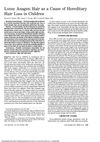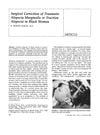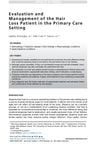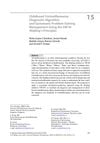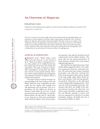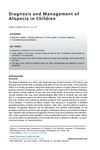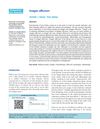Traumatic Alopecia
May 1999
in “
International Journal of Dermatology
”
TLDR Early diagnosis and treatment are crucial to prevent permanent hair loss from scalp trauma.
The document "Traumatic alopecia" by David A. Whiting, published on December 25, 2001, discussed the causes, diagnosis, and treatment of hair loss resulting from physical trauma to the scalp. It highlighted that traumatic alopecia could be caused by various factors such as mechanical damage, chemical exposure, or thermal injury. The paper emphasized the importance of early diagnosis and intervention to prevent permanent hair loss. Treatment options included removing the source of trauma, medical therapies, and in some cases, surgical intervention. The study was cited 40 times, indicating its influence in the field of dermatology and hair loss research.
